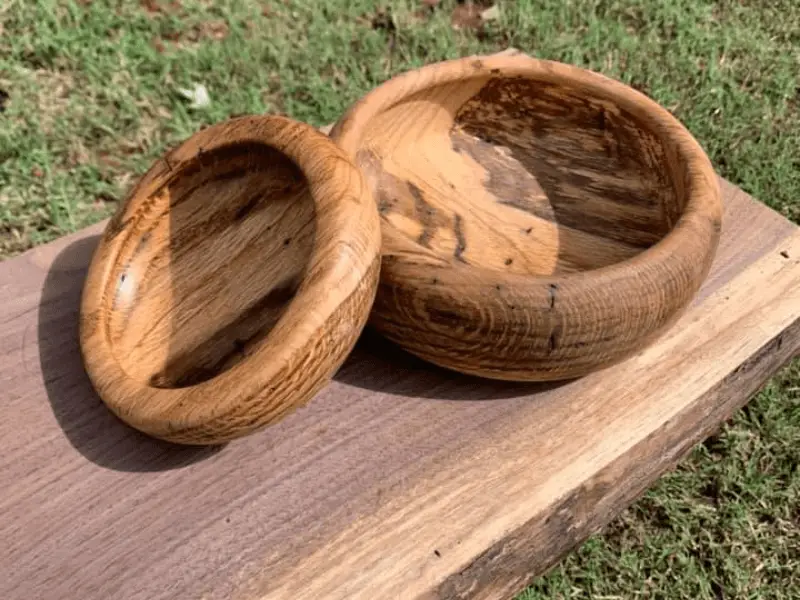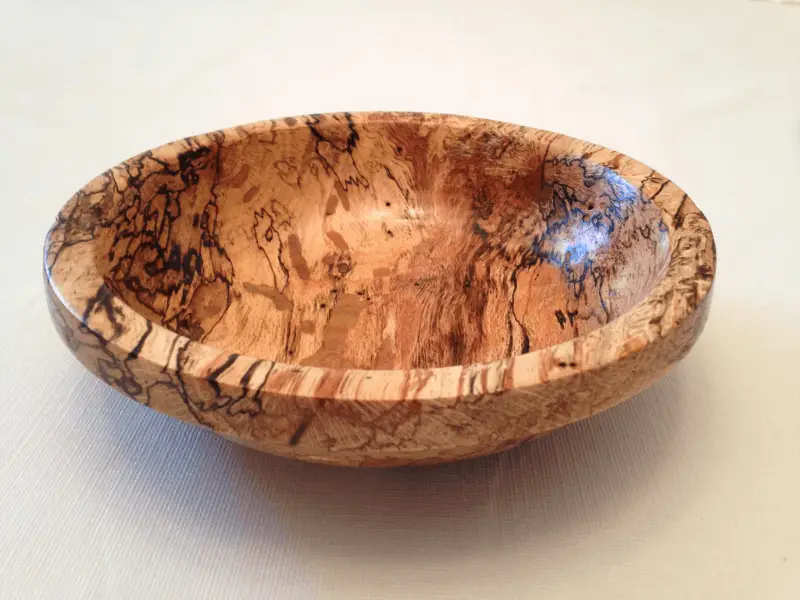Making a bowl is one of the most fascinating projects you can do as a woodworker. However, it requires you to have good wood so that you can achieve a perfect shape for a bowl. A good block of wood for bowls should have a strong grain pattern and can take the finish nicely. Some of the best woods for bowls include walnut, maple, and beech.
However, the question that many woodturners still ask remains: Does oak make good bowls? The answer is yes; oak is an excellent wood for bowls because it is sturdy and turns relatively well, especially when green. It is also possible to get a good finish on oak, and the grain is attractive once the bowl is finished and oiled. However, no matter how good oak is, its strengths remain some of its weaknesses. For instance, oak is tough and dense to the point where it can be challenging, especially for beginners.
Let us explore some properties that make oak a good wood for bowls and highlight some disadvantages that disqualify it as the best wood for bowls.
Properties of Oak that make it suitable for bowl

Durability
Oak is one of the most durable hardwoods because it has dense and tight grain patterns. The closed grain makes it so resistant to moisture, which might cause the rotting of the wood. Therefore, a bowl made of oak will be durable even if you use it to store food or liquids, plus it will be less susceptible to cracking or warping over time. So, therefore, using oak is a long-lasting and reliable choice for bowls.
Hardness
Oak is a hardwood that is very dense and harder than softwoods like cedar. Therefore this hardness makes oak a good choice when turning bowls. This is so because the hardness makes it possible for the bowl to withstand the wear and tear from everyday use, and as a result, the bowl is likely to get fewer scratches or dents.
Aesthetics
From tree to tree, oak has a distinctive grain pattern. While some oak trees have a more noticeable pattern, others have a straight grain. Oak bowls are enhanced by this unique pattern, which gives them personality and aesthetic appeal.
How much does it take to finish
Oak has a natural golden colour that you can enhance with a clear finish. However, you can stain oak to achieve a deeper colour if you prefer a darker finish. It is important to note that oak can be prone to blotching when stained, so it is essential to use a pre-stain conditioner to ensure an even finish.
The downside of oak disqualifies it as the best wood for bowls.
Hardness: While hardness is one of the oak’s best qualities, it is also one of its weaknesses. Making bowls out of oak can be challenging, especially for beginners, as it requires additional skills and tools.
Oak is porous: This makes it absorb more stain, making it difficult to get a good finish on parts of the bowl with strong edges. Also, it may leak liquid through if you used it as a cereal bow or something that holds a liquid.
Oak is also brittle: if you try to turn a bowl with thin walls, say 3 – 4mm thick, it is very easy to break the top edge.
As it dries, oak wood dramatically keeps shrinking. And due to that shrinkage, oak cracks and develops checks in the grain.
Conclusions
Oak is still a great material to use when making bowls despite everything. It is a popular choice among woodworkers due to its strength, toughness, and aesthetic value. Although it can be challenging to work with, you cannot discount it because the finished product is beautiful, and you get a bowl lasting for years. Therefore, whether you’re looking for a bowl to hold decorative items or serve food, oak is a fantastic option that will enhance the character and beauty of your home.

